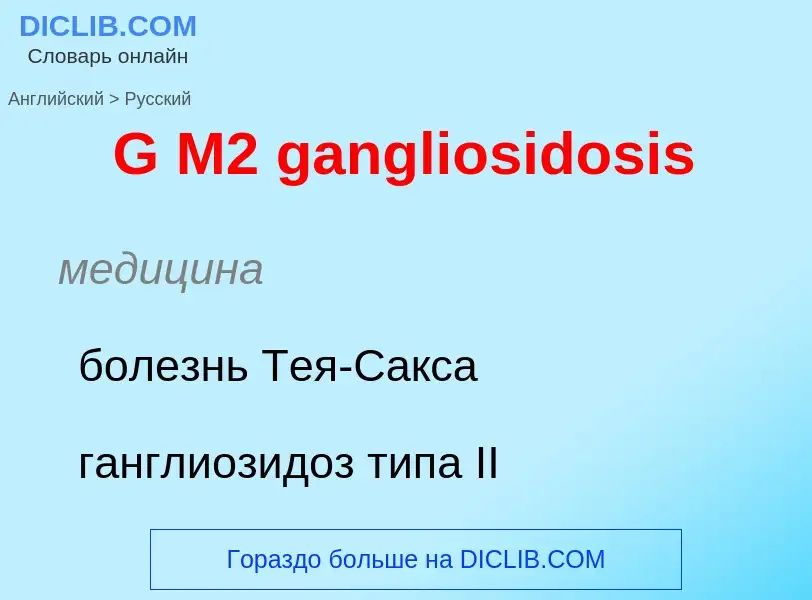Перевод и анализ слов искусственным интеллектом
На этой странице Вы можете получить подробный анализ слова или словосочетания, произведенный с помощью лучшей на сегодняшний день технологии искусственного интеллекта:
- как употребляется слово
- частота употребления
- используется оно чаще в устной или письменной речи
- варианты перевода слова
- примеры употребления (несколько фраз с переводом)
- этимология
G M2 gangliosidosis - перевод на русский
медицина
болезнь Тея-Сакса
ганглиозидоз типа II
амавротическая детская ранняя идиотия
[dʒi:]
общая лексика
(giga-) префикс гига-
обозначает 1 миллиард, или 109. В вычислительной технике G означает 230, или 1 073 741 824
сокращение
[gas] газ
газовый
Смотрите также
существительное
общая лексика
7-я буква английского алфавита
музыка
соль (G)
космонавтика
перегрузка
сленг
тысяча долларов (G.) ([сокр.] от grand)
Смотрите также
Определение
Википедия
The GM2 gangliosidoses are a group of three related genetic disorders that result from a deficiency of the enzyme beta-hexosaminidase. This enzyme catalyzes the biodegradation of fatty acid derivatives known as gangliosides. The diseases are better known by their individual names: Tay–Sachs disease, AB variant, and Sandhoff disease.
Beta-hexosaminidase is a vital hydrolytic enzyme, found in the lysosomes, that breaks down lipids. When beta-hexosaminidase is no longer functioning properly, the lipids accumulate in the nervous tissue of the brain and cause problems. Gangliosides are made and biodegraded rapidly in early life as the brain develops. Except in some rare, late-onset forms, the GM2 gangliosidoses are fatal.
All three disorders are rare in the general population. Tay–Sachs disease has become famous as a public health model because an enzyme assay test for TSD was discovered and developed in the late 1960s and early 1970s, providing one of the first "mass screening" tools in medical genetics. It became a research and public health model for understanding and preventing all autosomal genetic disorders.
Tay–Sachs disease, AB variant, and Sandhoff disease might easily have been defined together as a single disease, because the three disorders are associated with failure of the same metabolic pathway and have the same outcome. Classification and naming for many genetic disorders reflects history, because most diseases were first observed and classified based on biochemistry and pathophysiology before genetic diagnosis was available. However, the three GM2 gangliosidoses were discovered and named separately. Each represents a distinct molecular point of failure in a subunit that is required for activation of the enzyme.

